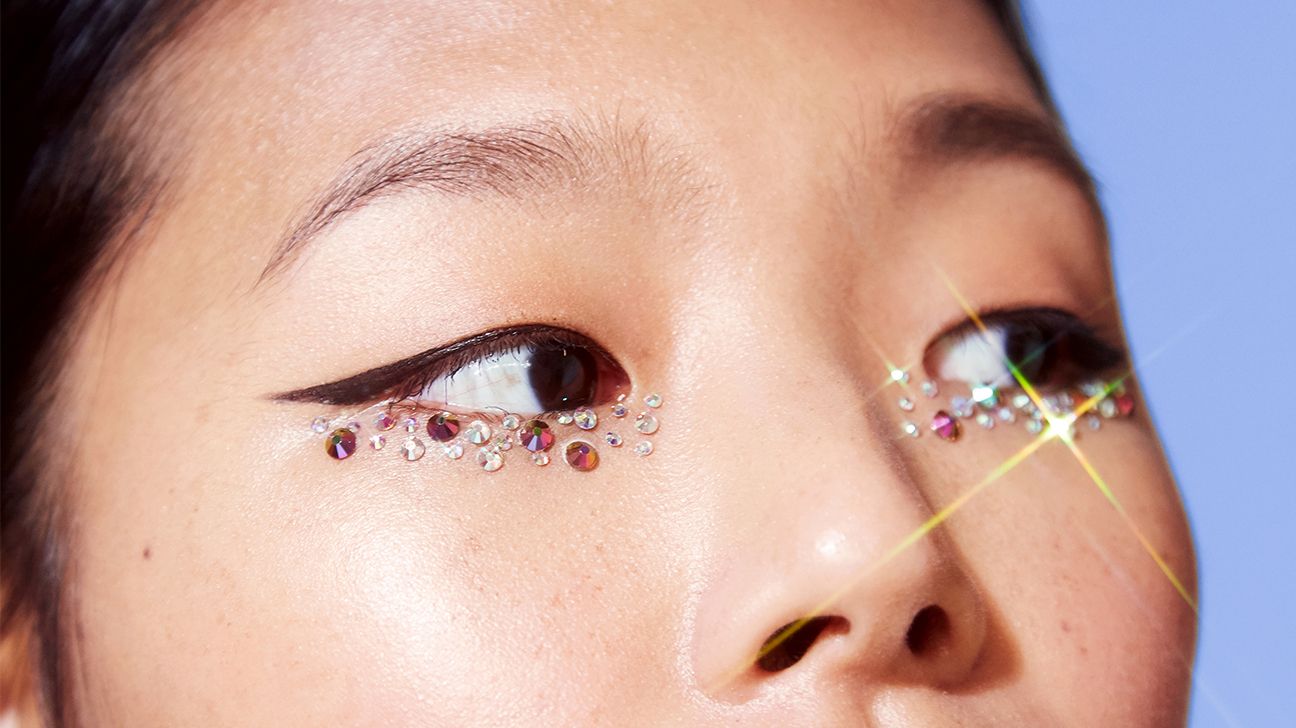Concerned about the tiny white bumps under your eyes? Don’t be! Those little bumps are cysts just under the skin. They’re made of keratin, the protein that makes your hair, nails, and skin durable enough to weather the elements.
If you’re not a fan, we’ve got you covered.
How can you treat under-eye milia?
Sometimes milia will go away on its own. If not, under-eye milia can be treated:
- with gentle exfoliators and peels
- with a topical retinoid
- with in-office extraction, laser ablation, and/or cryotherapy
Word of caution: Milia may look like little pimples or whiteheads, but don’t try to squeeze them! It won’t work, and you’ll just end up with angry red spots instead of tiny white ones.

Milia may just go away with no treatment at all! They’re harmless, so you could just wait it out.
However, if milia under your eyes are a real bummer for your self-esteem, and you want them gone for cosmetic reasons, there are a few options.
At home treatment for under-eye milia
At home, you can try exfoliation or home chemical peels. Since we’re talking about milia near your eyes, it’s super important to first consult professional advice about which products are safe for this delicate skin area.
Over-the-counter (OTC) chemical peels usually contain lactic acid, salicylic acid, or glycolic acid. To be completely frank, these products aren’t a good choice for your sensitive peepers, and may not even get rid of milia anyway. If your little spots are terrorizing you, definitely see a professional for an exorcism… I mean excision. Er, removal.
Professional options for under-eye milia
With the right tools and know-how, a medical professional can take care of those bumps and restore your eye area to smooth and flawless.
- Extraction. A dermatologist can use a tiny needle to open the pore and remove the cyst. This is very delicate work and not a job for your home magnifying mirror and fingernails! Yee-ouch!
- Laser ablation. Very much like an extraction described above, except with lasers! Pew pew!
- Cryotherapy. In some cases, a doctor can use liquid nitrogen to freeze an offending bump off your body. This may be a case of overkill for tiny milia in the eye area, though.
Milia en plaque can even be triggered by cryotherapy treatments. Sometimes many milia can form in the same spot over time, creating a condition called milia en plaque. Even this overgrowth is benign and can be treated with cosmetic procedures.
Let’s take a microscopic look at your pores. Skin cells are constantly dying and shedding (RIP). Keratin from those dearly departed skin cells can get trapped and form a little cyst in your pore. Hello, milium (the word for a singular bump).
You can actually get milia anywhere on your bod, but you’re most likely to find them around your eyes, on your cheeks and forehead, or on your genitals.
Your regular doctor or dermatologist will easily recognize milia just by doing a visual examination of your skin. With a little info about your history, the doctor will help you figure out if your milia are a random occurrence or likely caused by a skin treatment or trauma.
There are some underlying conditions like genetic skin disorders that can cause milia, so tell your doctor if you’ve had other skin symptoms.
When it comes to a tricky little thing like milia, you may not be able to do much in the way of prevention. Gently caring for your skin and avoiding trauma (no kidding, right?) are probably the best bet for keeping your skin gorgeous. Try this routine:
- Use a gentle cleanser on your face regularly.
- Only use products intended for the super sensitive eye area around your eyes.
- Don’t exfoliate any more often than recommended, like 1 to 2 times a week.
- Maybe don’t DIY anything harsh like a peel or resurfacing treatment.
- Watch for changes in your skin and bring up anything weird with your dermatologist.
- Really try not to squeeze or pick!
- A topical retinoid treatment may help with milia, but use carefully. They can cause irritation and sun sensitivity.
Those little white or yellow bumps under your eyes (and elsewhere on your face or genitals) are called milia. They pop up when protein from dead skin cells get trapped under your skin. They’re harmless and usually go away without treatment, but a doctor can probably remove them if you want.

